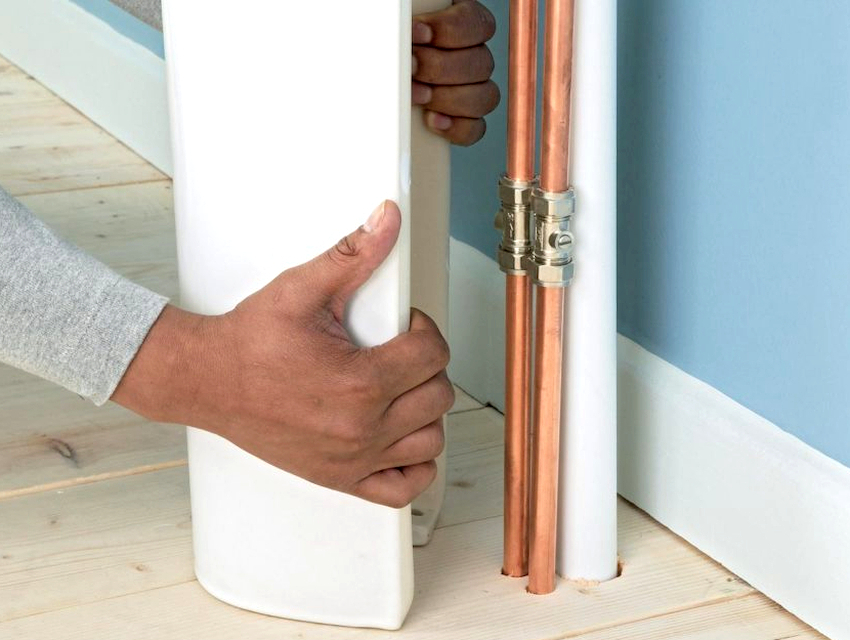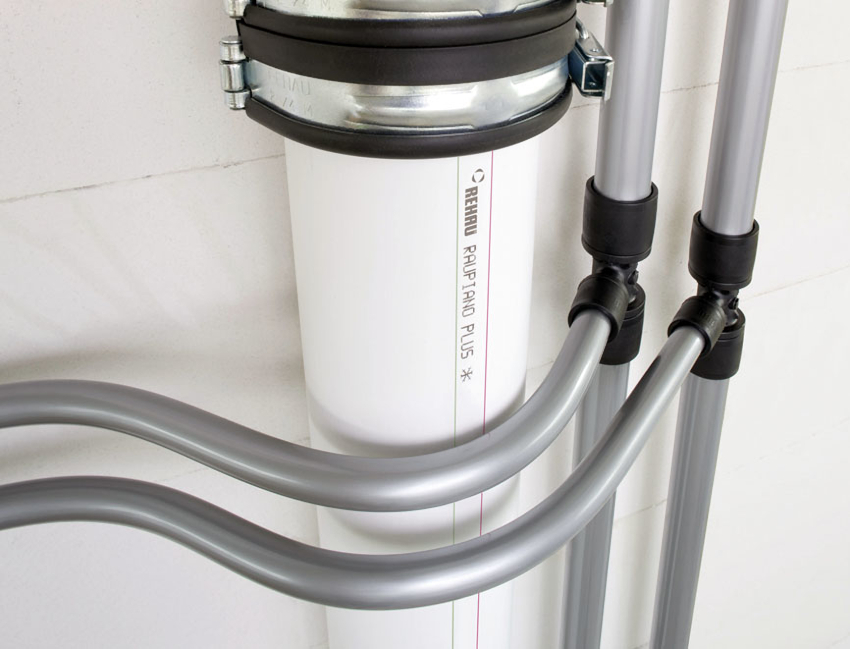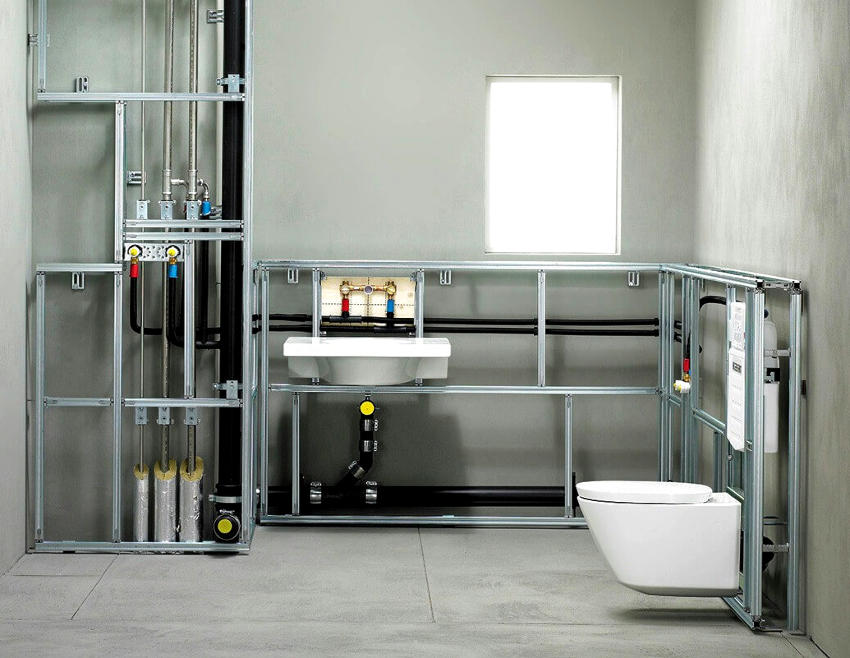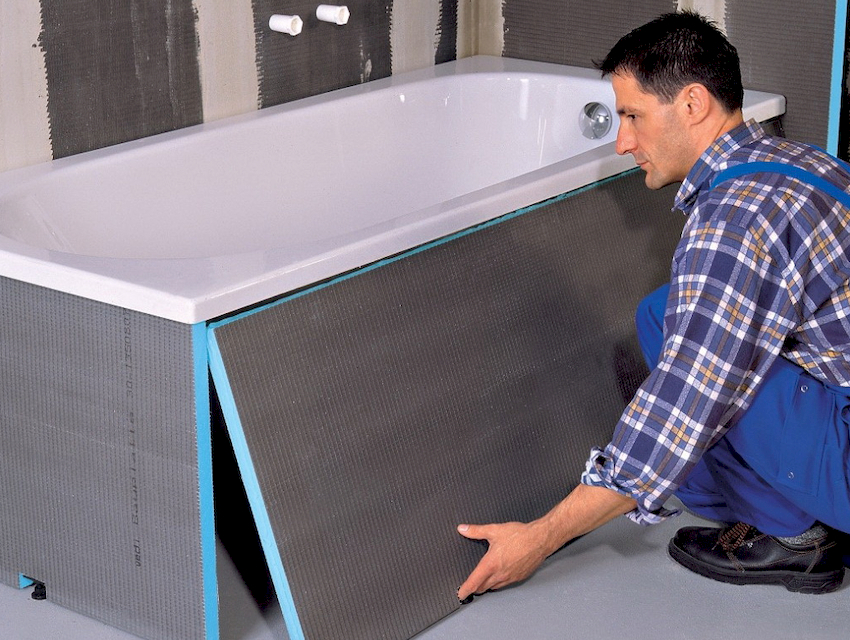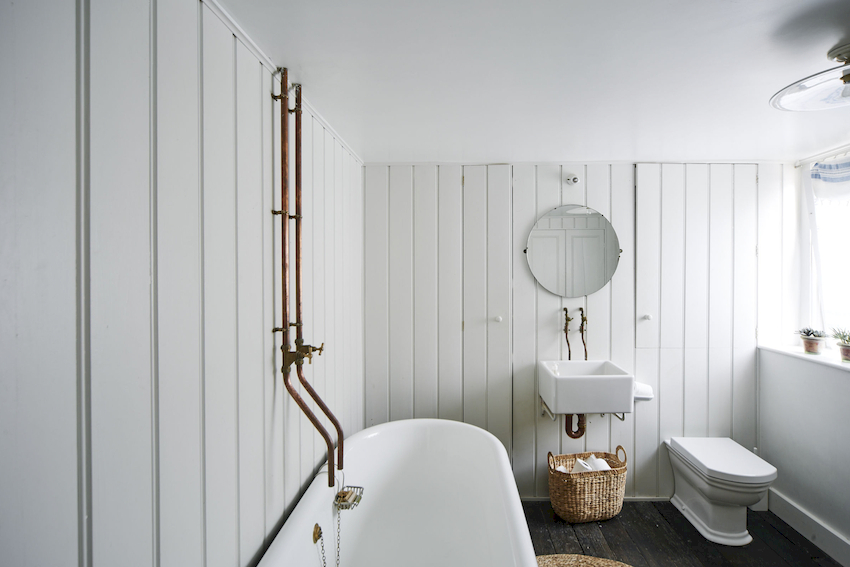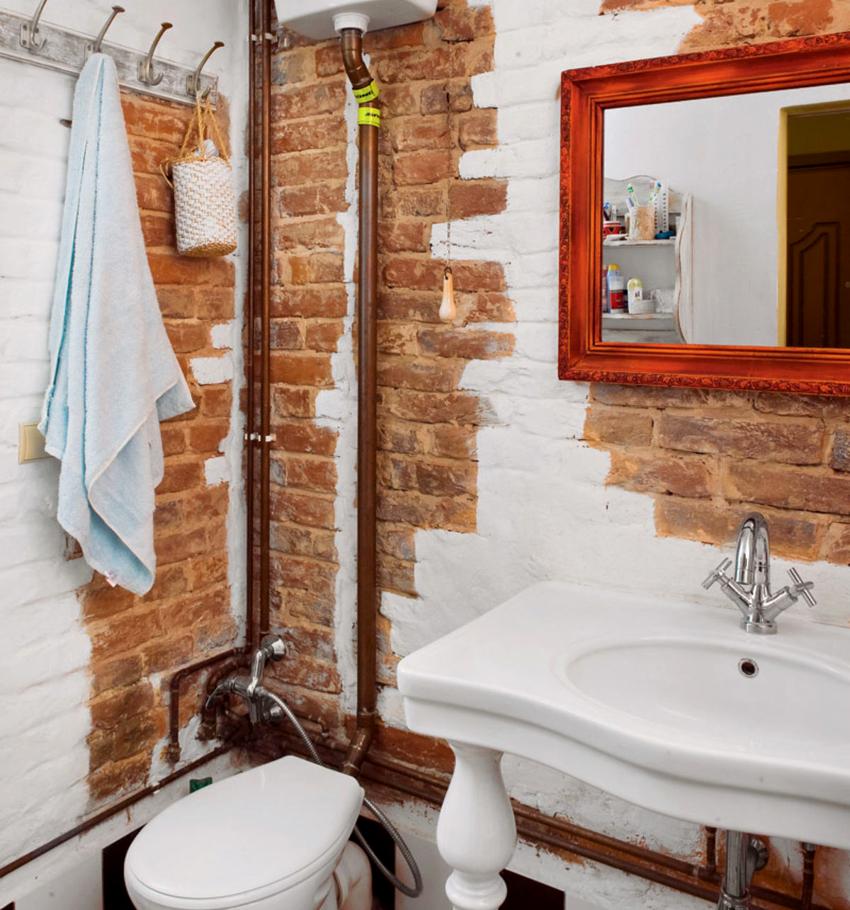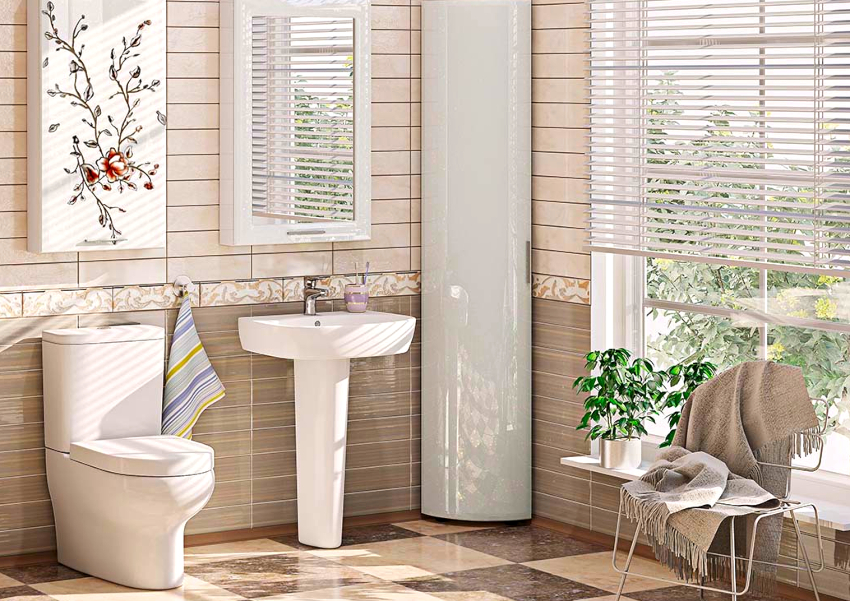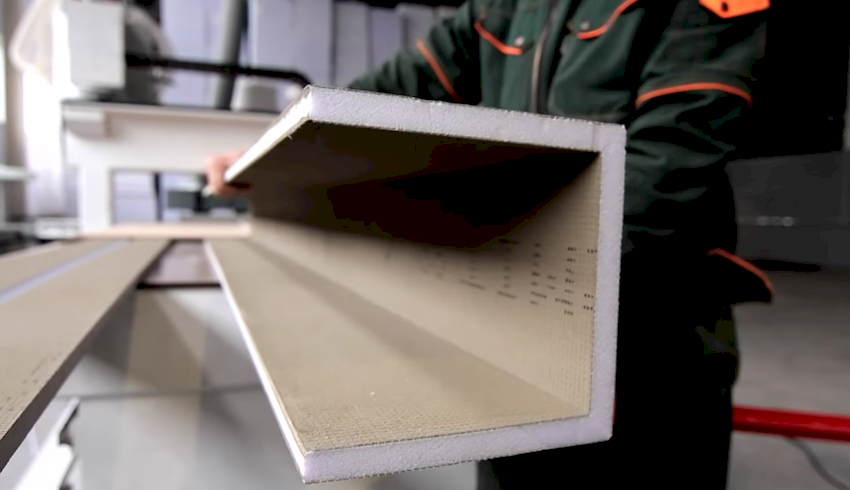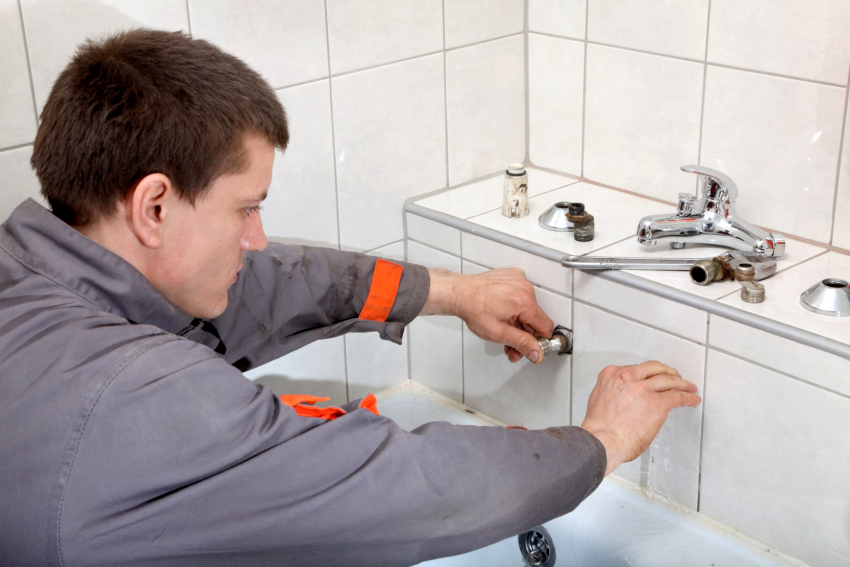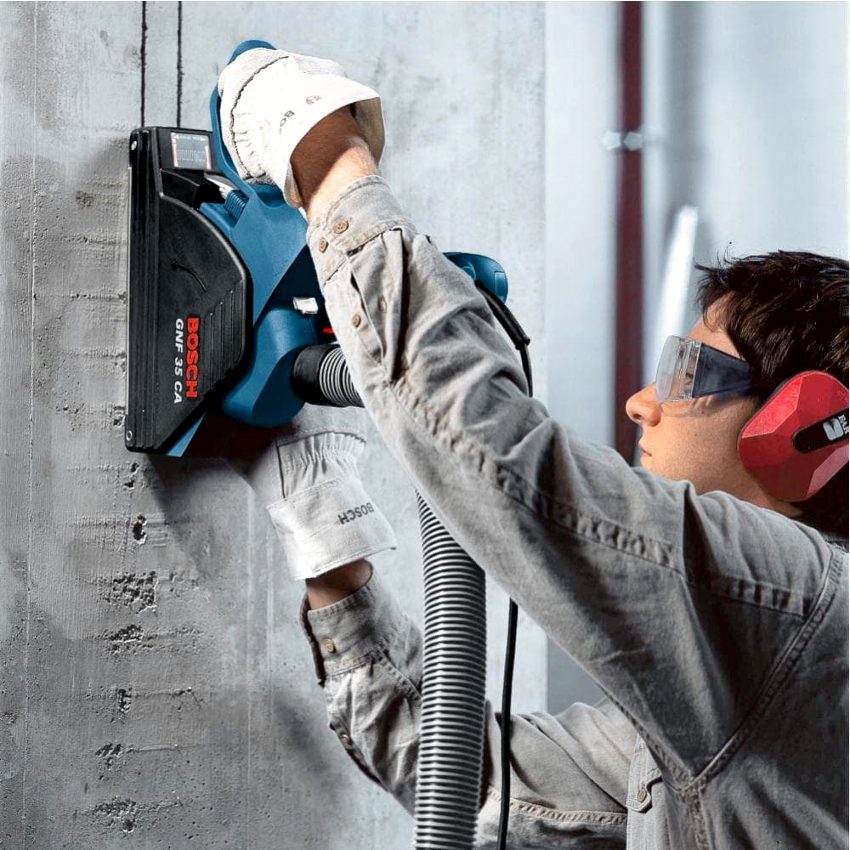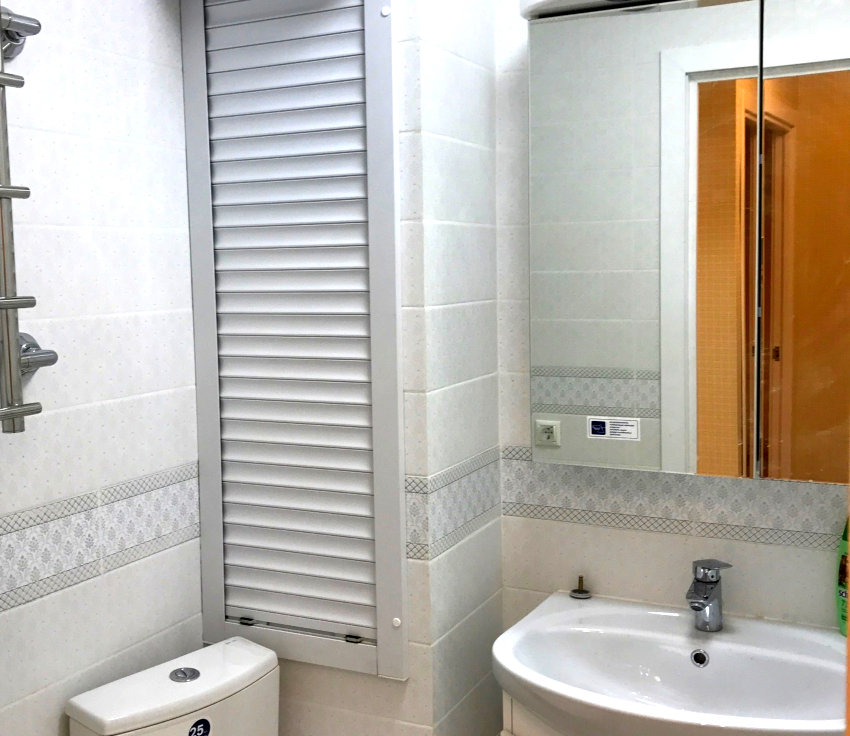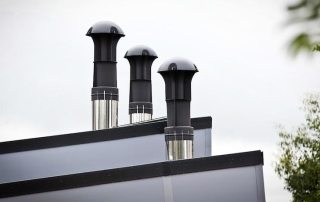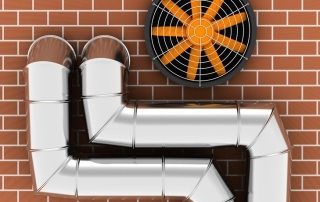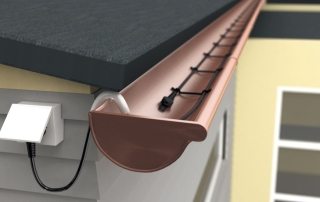Wanting to make a modern and high-quality renovation, many are wondering how to hide the pipes in the bathroom in such a way that they are as invisible as possible and at the same time do not take up too much space. This article provides an exhaustive answer to this question and examines in detail the most effective ways to mask communication systems in an apartment and a private house.
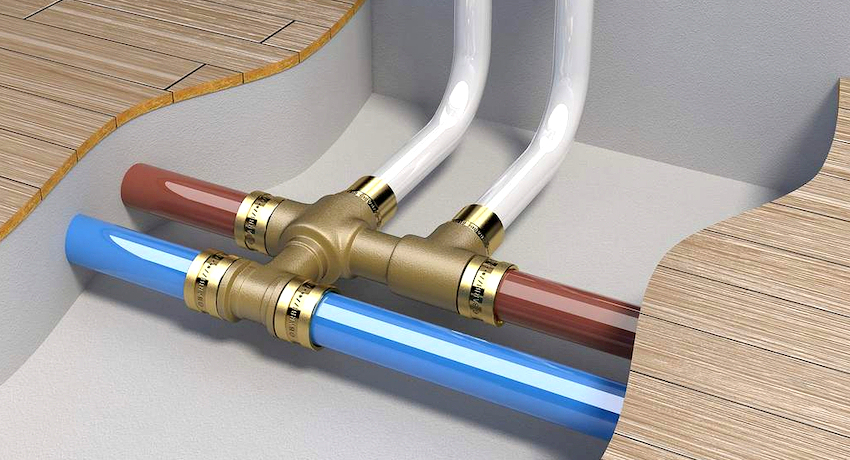
The ability to completely hide the pipeline is only available at the construction stage or subject to major repairs
Content
- 1 How to hide pipes for heating, water supply and sewerage: general information
- 1.1 Should you resort to masking pipes in the bathroom and toilet
- 1.2 Communications in the bathroom: photos of risers and pipes
- 1.3 How to close the pipes in the bathroom and which sections of communications are better not to touch
- 1.4 How to hide pipes in the bathroom correctly: tips for installing a hidden pipeline
- 2 How to hide pipes in the bathroom: popular camouflage methods
- 2.1 How to hide pipes in the bathroom without mounting them in the wall: painting
- 2.2 How to decorate a heating pipe in a room: photos of interesting design options
- 2.3 Masking the piping and riser in the bathroom with furniture
- 2.4 How to hide sewer pipes in the bathroom: photo of screens made of plastic panels
- 2.5 Construction of a plasterboard box for pipes in the bathroom
- 2.6 How to hide pipes in a bathroom under a tile: making a functional frame
- 2.7 How to hide pipes in a wall: installation of communications in grooves
- 3 How to hide pipes in a toilet with access to them: installation of roller shutters
- 4 How to hide pipes in the kitchen: photos and examples of interesting camouflage methods
How to hide pipes for heating, water supply and sewerage: general information
There are much more options for hiding heating pipes in a private house than in a city apartment. The communication systems of such buildings are completely autonomous and do not depend on their neighbors. Therefore, they can be laid as you like. If it is planned to change the configuration of the heating and plumbing systems in an apartment building, any actions can be performed only with the permission of the operating organization. In addition, you will have to take into account the interests of the residents of the whole house.
The ability to completely hide the pipeline is available only at the construction stage or subject to major repairs. In other cases, outdoor decoration methods are used to mask communications.
Should you resort to masking pipes in the bathroom and toilet
Measures to mask communication systems allow maintaining the aesthetics of the interior.If methods of hiding in the wall are used, then the useful area of the room is preserved, which is of great importance for owners of small-sized apartments. The use of pieces of furniture for these purposes allows not only to hide all the unsightly parts of the pipes, but also to organize additional storage space in the room, and also to maintain the necessary style of the interior.
Important! Any radical changes have an impact on the functioning of the system. Therefore, before hiding the sewer pipe and other elements of communications in the wall, you need to carefully study the wiring diagram and outline the likely consequences.
When thinking about how to hide pipes in an apartment, it is imperative to take into account the disadvantages of such events:
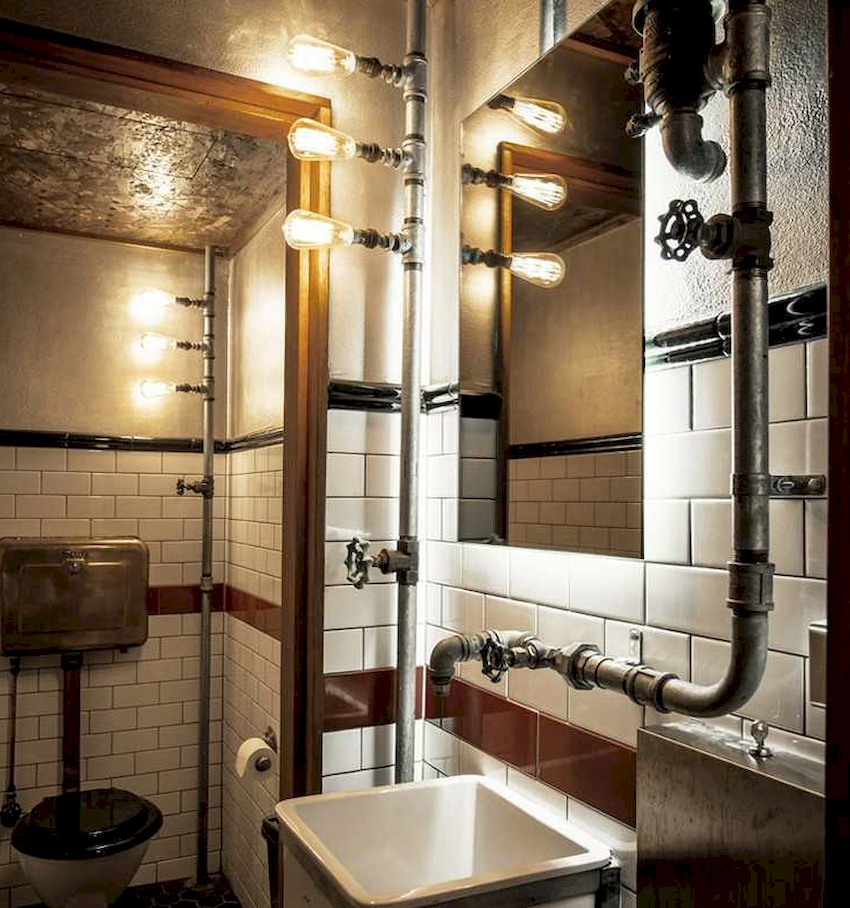
When thinking about how to hide pipes in an apartment, be sure to consider that in this case, access to communication systems will be limited.
- If materials of poor quality or unsuitable for these purposes are used in the repair process, the probability of pipe breakage increases.
- Access to communication systems will be limited. The exception is roller shutters.
- If an emergency pipe break occurs, then the disguise will have to be completely destroyed in order to carry out repair work. Plasterboard structures are in a special risk category, and the greatest damage to the interior is caused if ceramic tiles were used as finishing.
- It is imperative to take into account that overhaul in this case is inevitable. In the event of an accident, it will not be possible to quickly find and eliminate the leak, so you need to be prepared for the fact that you will also have to compensate for the damage to your neighbors.
- If pieces of furniture are used to mask communication systems in the bathroom, constant contact with water is inevitable, which will lead to damage to these structures.
Communications in the bathroom: photos of risers and pipes
For laying communications, it is necessary to use only high-quality materials, because the reliability, strength and durability of the entire system directly depend on this.
The bathroom may have pipes for the following purposes:
- sewer;
- plumbing;
- heating.
The latter option is found only in private houses, so the question of how to hide the heating pipes in the bathroom is relevant only for owners of suburban housing.
The following types of pipes are distinguished by the material of manufacture:
- plastic;
- metal;
- polyvinyl chloride;
- metal-plastic;
- polyethylene.
Metal products are steel and cast iron pipes. For laying communication systems, these materials have not been used for a long time, however, they are still found in buildings of pre-revolutionary and Soviet construction. Copper pipes are also included in this category. This type of product is considered quite technologically advanced and modern, but it has one significant drawback - high cost.
Helpful advice! In the process of installing copper pipes, it is advisable to use fittings to connect individual elements or to use soldering technology.
Plastic or polypropylene pipes are most in demand. They are ideal for laying heating, water supply and sewerage systems.
Among the advantages of these products:
- simple installation system;
- light weight;
- high degree of reliability.
To connect the elements, thermal welding technology is used, due to which the system is completely monolithic. Such pipes can be hidden with a box in the bathroom or walled up directly in the walls. A water supply system made of polypropylene pipes is capable of withstanding high pressure. During operation, it does not rot and does not rust.
Reinforced-plastic pipes are very flexible, which makes it possible to create on their basis communication systems of complex configuration. Unlike plastic pipes, this type of product cannot be joined by welding. For these purposes, metal collets and fittings are used. This type of connection is unreliable, since leaks often occur at the joints.
It is not recommended to use polyvinyl chloride pipes (PVC) for the organization of water supply and sewerage systems. The walls in such products are very thin and cannot withstand pressure drops and high temperatures. The same goes for polyethylene pipes.
How to close the pipes in the bathroom and which sections of communications are better not to touch
This item will be useful for people who want to know how to hide the pipes in the bathroom in the wall, laying them in a gutter under a layer of special solution. This method of disguise requires special attention. If the pipeline hidden in this way is damaged, you will have to break the wall.
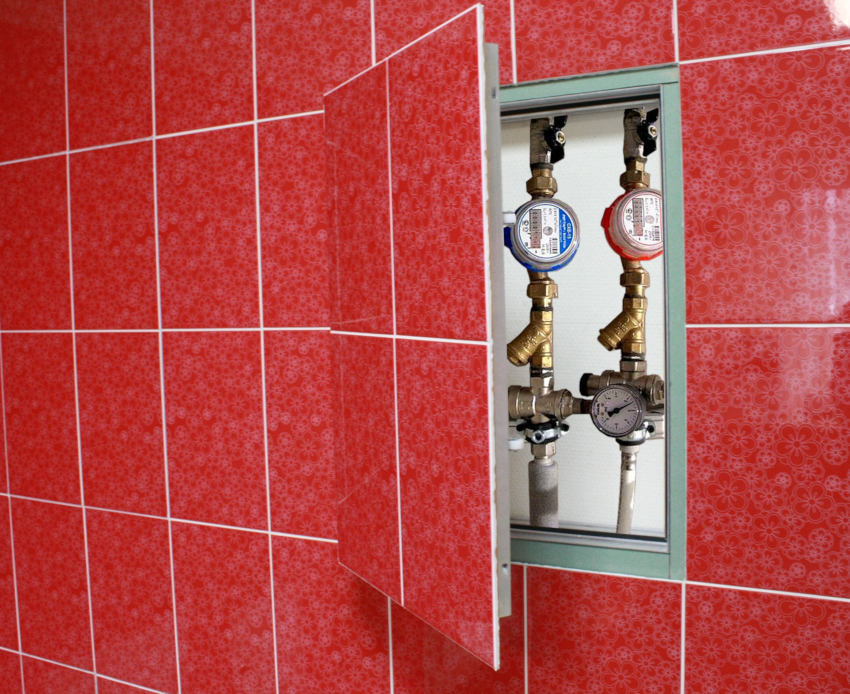
Before you hide the plumbing pipes in the bathroom, you need to make sure that they will be quickly accessible.
The following types of products can be sewn into the wall (without threaded connections):
- welded steel pipes;
- plastic brazed pipes;
- copper pipes.
Important! Do not grout the piping immediately after it has been laid. It is not always possible to notice a poorly executed adhesion immediately. Sometimes thin seams on copper, plastic or steel pipes will leak the next day. Therefore, the grooves are closed only after the system has been checked for leaks. For this, high pressure water is driven through the pipes.
Before hiding the plumbing pipes in the bathroom, you need to make sure that you will have quick access to the following system elements:
- the area where the pipes are fastened with threaded connections;
- X-, T- and L-shaped connecting metal fittings (high-risk areas where leaks often occur);
- places where filters and meters are installed.
How to hide pipes in the bathroom correctly: tips for installing a hidden pipeline
There are several important rules that must be followed when installing a hidden pipeline.
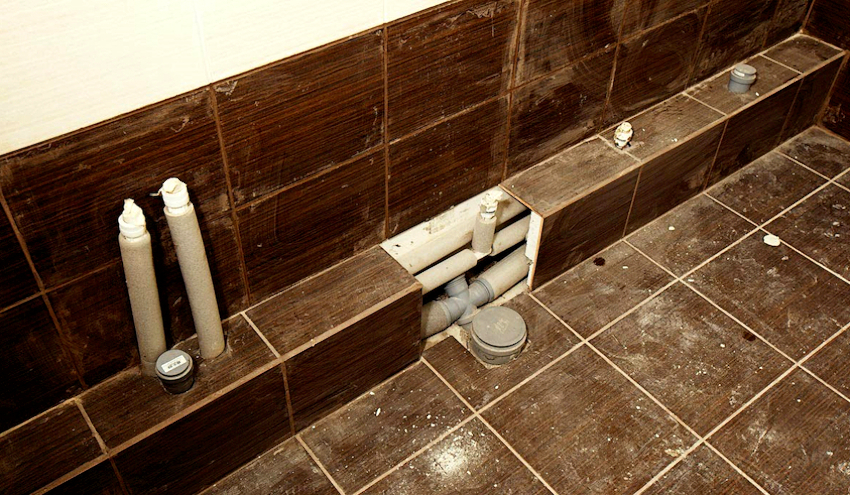
The functional frame is not just a box lined with tiles, but a convenient structure that can be disassembled if desired
How to hide heating and plumbing pipes in a room so that the system is safe and reliable? To do this, you should follow the recommendations of specialists:
- Keep the number of connections to a minimum.
- Use identical materials in the work.
- Make sure you have a viewing window.
- Use materials with insulating properties.
Since the joints between the pipes belong to areas of particular risk, it is advisable to develop a communication scheme so that there are as few such sections as possible. It is better if the wiring plan is drawn up by a professional plumber. The specialist will also be able to advise on how to hide the sewer pipes in the bathroom without errors and violations.
If it is impossible to do without connecting elements, you need to make sure that they are made of the same material as the pipes. In this case, the tensile strength, coefficient of linear expansion and other parameters will be the same, so there is no need to be afraid that a leak will occur in the pipeline.
It is imperative to think over in the process of repairing the toilet how to hide the pipes in such a way that at the same time access to the meters is preserved. After all, they will have to regularly take readings, and they also need to be revised every few years. The installation of a special hatch complete with a door will help to solve the problem of access to the meters.
Important! The inspection hatch must be installed where there are water filters and a large number of connections are present. It will allow you to monitor the state of these elements, and, if necessary, timely eliminate the leak.
In the process of laying pipes with cold water, you should not neglect materials with insulating properties. Due to temperature differences, condensation can accumulate on them. The presence of a special insulating casing will eliminate this problem. Usually it is made of thermoflex or foam rubber. If you use the casing before hiding the heating pipes in the apartment, this will protect the system in the event that its elements expand under the influence of high temperature.
How to hide pipes in the bathroom: popular camouflage methods
There are many effective and practical ways to mask bathroom piping. Some of them are simple, so they require a minimum amount of time and low financial costs - others are serious projects.
How to hide pipes in a room? For this purpose, the following methods are used:
- staining;
- decoration;
- disguise with furniture;
- installation of a screen made of plastic panels;
- construction of a false wall or a special plasterboard box;
- production of a plasterboard frame with a tile finish;
- installation of the pipeline into the wall.
How to hide pipes in the bathroom without mounting them in the wall: painting
Staining makes the pipeline less visible against the background of the walls. The quality result depends on how correctly the type of dye and its color are selected. On sale there are special varieties of white compounds intended for heating pipes. Unlike conventional dyes, such coatings do not turn yellow over time and tolerate heat well. The following types of compositions are suitable for painting a metal pipeline:
- acrylic;
- alkyd;
- water-dispersive.
To paint heating pipes, it is imperative to take a heat-resistant dye. Plastic products do not react well to acetone. For them, the following types of compositions are used:
- pentaphthalic paint or acrylic based on white spirit;
- a water-based colorant for surfaces made of mineral materials;
- water-soluble dyes used for the processing of joinery.
Before hiding a pipe by painting, its surface must be carefully prepared:
- clean up;
- remove traces of dirt and dust;
- cover with a layer of primer.
Important! Before painting directly, make sure that the pipe surface is dry and free of condensation.
How to decorate a heating pipe in a room: photos of interesting design options
To decorate external communications, you can use polyurethane tubes, which are decorated with stucco molding. The result is a small column. This element will perfectly fit into the interior of the bathroom, made in a classic or aristocratic style. However, this masking method is applicable only to vertical pipes, such as risers.
Related article:
PVC pipes for sewage: sizes and prices of plastic products
Classification of polymer pipes: main types, their features and technical characteristics, application in practice.
Pipes can be hidden with the help of artificial vines and other climbing plants, and they also often use a special dye to apply drawings and patterns to their surface that are repeated on the tile.
Many people are interested in how to hide the heated towel rail pipes in the bathroom using available tools:
- Twine - the technique of weaving macrame will allow not only to hide the coil, but also to decorate it, while maintaining the thermal characteristics of the pipe.
- Cardboard tube - tubes left after cling film or foil are cut along the length and put on as a cover on the tube. After that, they can be painted with a dye.
- Cloth curtain - an unsightly coil can be hidden with a regular curtain. To hang it, it is enough to drive in a couple of nails or self-tapping screws and pull a rope between them.
Masking the piping and riser in the bathroom with furniture
Many people ask the difficult question of how to close the riser in the bathroom, since this section of the pipeline is large. Furniture can be used for these purposes. If you choose the right bathroom furnishings, the pipes will not be visible at all, and the interior will turn out to be functional and comfortable.
A tall pencil case is suitable for masking the riser. Before installing it, the rear wall of the structure is removed, and recesses are made on the inner shelves (in the part where they are adjacent to the wall), repeating the size and shape of the pipe.
Useful advice! So that the pencil case fits perfectly into the interior of the room and there are no problems with its installation, it is advisable to order the manufacture of this piece of furniture according to individual sizes.
The apartment owner inevitably faces the question of how to hide the drain pipe in the bathroom, which is adjacent to the washbasin. To do this, you can use a small bedside table, which is installed in the same way as a pencil case. In bathrooms, water heaters are often installed, pipes are supplied to them from below. As an alternative to the bedside table, a beautiful laundry basket is suitable, which is placed directly under the sink.
How to hide sewer pipes in the bathroom: photo of screens made of plastic panels
Making a screen from plastic panels is the best option for masking pipes in a room with a high humidity level. This type of material is very easy to install. If desired, such a structure can be quickly disassembled, and it can be quickly assembled back. Plastic panels are used to mask risers, utilities under the bathroom, as well as horizontal pipes that run above floor level.
How to hide sewer pipes in a bathroom with plastic panels? Frame assembly steps:
- Marking.
- Installation of wooden planks around the perimeter (if the screen size is large, you need to install several planks in the center to provide additional stiffeners).
- Cutting of plastic panels into pieces of appropriate sizes.
- Fixing the first panel to a wooden frame using self-tapping screws.
- Installation of the remaining panels, which are fastened together by means of latches.
- Fixing the last panel with self-tapping screws.
- Installation of decorative corners for masking fasteners.
To form a wooden frame under the bathtub, you need to fix the bottom plank to the floor surface. The upper bar is fixed on the wall on one side, and then it is held by spacers installed in increments of 40 cm. The frame cladding under the bathroom with plastic panels is performed in a similar way.
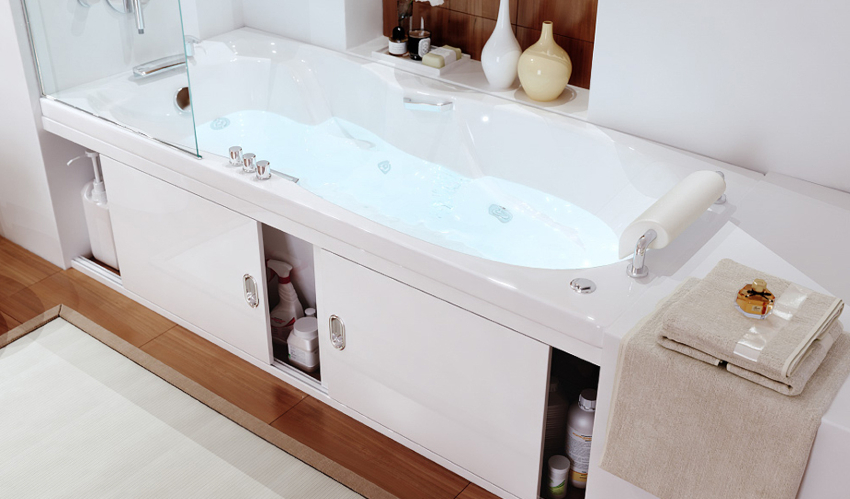
Making a screen from plastic panels is the best option for masking pipes in a room with a high humidity level
Construction of a plasterboard box for pipes in the bathroom
Building a false wall or plasterboard box is considered a more difficult method of disguise. Such structures make it possible to hide a pipeline that runs horizontally and vertically. This method is also suitable for bath tub cladding, however, unlike plastic panels, drywall needs finishing.
Important! In rooms with a high level of humidity, you need to use moisture-resistant plasterboard sheets.
Plasterboard box manufacturing technology:
- In the installation area, markings are applied, according to which materials are cut.
- The frame part of the box is assembled from metal profiles.
- Applying a building level, you need to check how smooth the edges of the structure are.
- Plasterboard sheets are cut into fragments of the required size and attached to the metal frame with self-tapping screws.
- After assembly, the surface of the plasterboard box is covered with a layer of primer.
- A special mesh is glued at the joints, which will strengthen the fixation.
- The box is processed with putty.
- Installation of finishing is in progress. Usually, a tiled mosaic is used for these purposes.
A false wall is made in the same way. It is most often used to mask risers. The structure is formed from metal profiles with a distance of about 30 cm from the main wall. At the same time, the useful area of the room will decrease, but it will be possible to hide the counters and filters. To provide access to these elements, it is necessary to cut in a small inspection hatch.
How to hide pipes in a bathroom under a tile: making a functional frame
The functional frame is not just a box lined with tiles, but a convenient structure that can be disassembled if desired. If there are any leaks, there will always be free access to these areas.
For work you will need:
- tile cutter (can be replaced with a hacksaw for metal);
- plastic corners;
- metal profiles;
- ceramic tile;
- drill;
- self-tapping screws.
First, you need to draw up a drawing of the future structure and calculate all the dimensions. Then, in the installation area, markings are applied to the walls, floor and ceiling, in accordance with which the frame is assembled from metal profiles. Metal staples can be used to fix these elements to the surface.
After that, the edges of the finished frame are measured. Taking into account the obtained parameters, the tiles are cut. In this case, it is imperative to take into account the thickness of the tile so that the joints between the edges are neat and accurate. Using feather drills, using a drill along the edges of the tile, it is necessary to make 2 holes for self-tapping screws. Next, the tile is applied to the metal frame and marks are made through these holes with a marker. This will allow the installation of tiles without distortions.
Important! The holes in the tiles are made of sufficient size so that the screw can freely pass through them. The size of the slots on the profile should be smaller so that the fasteners can be tightened and fixed.
When all tiles are installed, all attachment areas and corners must be closed with plastic corners. In the place where access to communications is required, a gap is made between the cladding, where the inspection hatch is installed. In the process of work, it is imperative to use safety glasses and gloves, as well as moisten the tiles with water so that it does not crumble.
How to hide pipes in a wall: installation of communications in grooves
The most radical and time-consuming way to mask pipes is to lay them in grooves. The application of this method is possible only if the premises are redeveloped or renovated from scratch. The disadvantage of this disguise is that there will be no direct access to communications hidden in the walls.
How to hide water pipes in the bathroom in the walls? To do this, perform the following actions:
- A plan for the distribution of communications is drawn up.
- Having determined the points of placement of all plumbing units, you can start forming strobes in the walls.
- A marking is applied to the surface, according to which grooves are formed in the walls using a perforated drill. In extreme cases, the use of a punch is allowed.
- It is necessary to remove construction debris from the resulting strobes and treat the surface with a primer.
- A pipeline is laid in the grooves, which should be monitored for several days to make sure there are no leaks.
- After checking for leaks, the grooves along with the communications are filled with cement mortar.
- After making sure that the solution is completely dry, you can start finishing work.
When working with punched drills, be sure to use a respirator and safety glasses.
How to hide pipes in a toilet with access to them: installation of roller shutters
Roller shutters or blinds are lightweight structures made of metal or plastic, which not only mask communications in the room, but can also become an interesting element of the interior. On sale you can find plumbing shutters in various colors, as well as products decorated with prints.
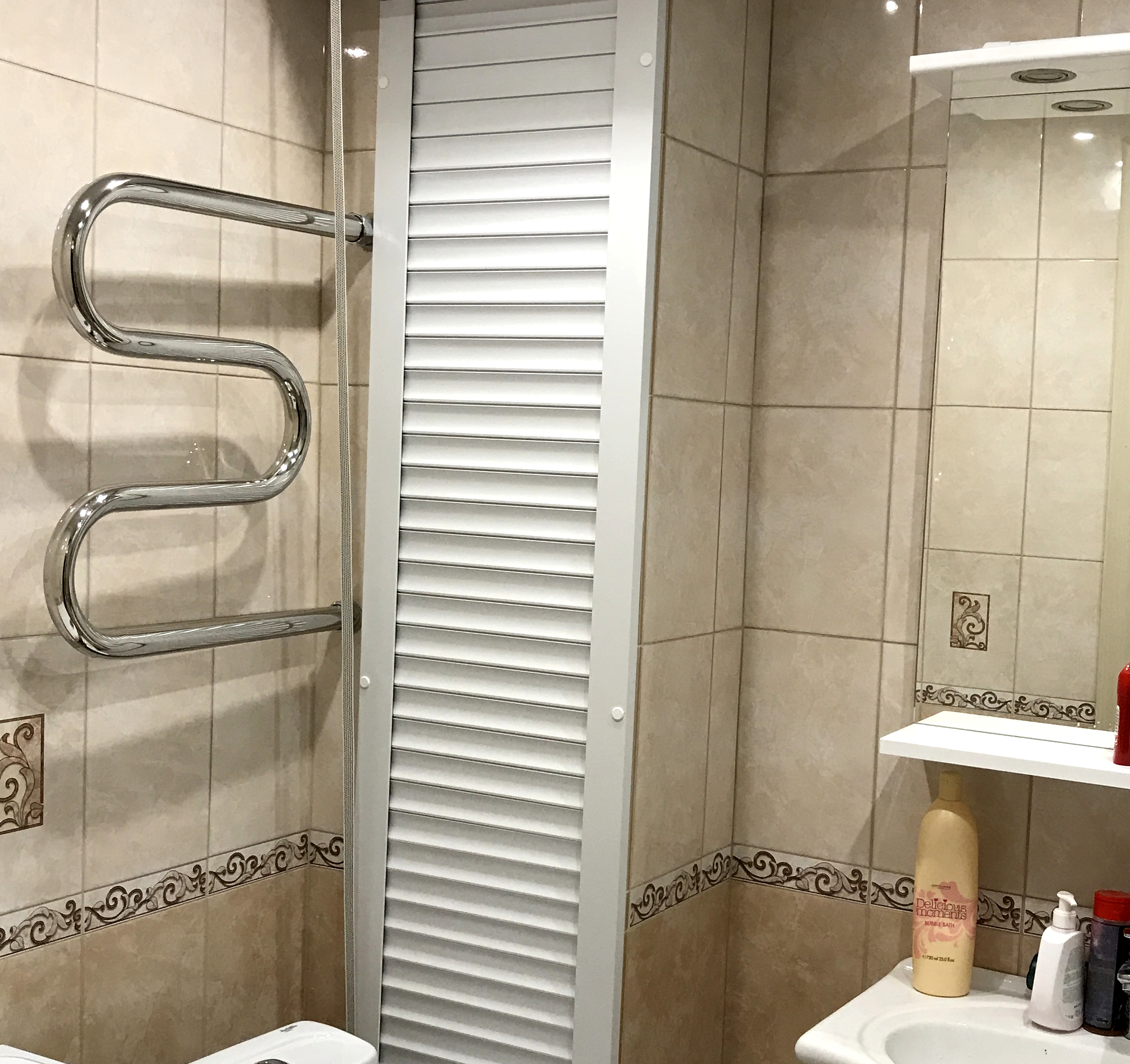
Roller shutters or blinds not only mask communications in the room, but can also become an interesting element of the interior
The blinds can be lifted mechanically (manually) and automatically. The opening option depends on the size of the canvas. If the opening width is less than 52 cm, the system can be manually operated using a cord. If the opening is much larger, you will have to install automation.
Important! If an automatic system is installed in the toilet, the lift motor must be in a sealed case so that dust and moisture cannot damage it.
Roller shutters are installed in a frame, which can be made using one of the technologies described above: assemble a box made of plastic or drywall, or build a false wall. For the lifting mechanism to function normally, the sides of the frame must be located strictly parallel to each other. Even if there is a slight skew, the rollers will not be able to move freely.
How to hide pipes in a toilet with access through roller shutters? You can use one of the following methods:
- Install blinds at the top of the box - this type of installation is suitable for those cases when the pipeline is located in a natural niche. To install the system, it is enough to fix the profiles and the roller shutters themselves around the perimeter.
- Form a box around the canvas - the installation of the system involves the creation of a protruding structure, which is sewn up on the sides with plasterboard sheets and tiled. The roller shutter curtain itself serves as the front side.
If a system that opens manually is selected for installation, the roller shutters are first assembled, only after that you can start installing the structure.
How to hide pipes in the kitchen: photos and examples of interesting camouflage methods
In addition to washing, in many kitchens you can find gas stoves, washing machines and dishwashers, hoods and heating equipment. All this functions due to communication systems, so many apartment owners are wondering how to hide pipes in such quantities in the kitchen. The masking method depends on the purpose of these pipes, as well as their location.
How to hide a gas pipe in the kitchen: popular ways
On the Internet, you can find many examples that clearly show through photos how to hide a gas pipe in the kitchen without disturbing the beauty of the interior. The most common option is staining. The color of the pipe can be made to match the wall or, conversely, contrast against its background. In addition, you can use decoupage and painting techniques, as well as decorating with magnets, ropes, plastic plants, mosaics and other improvised means.

With the help of a railing, you can create an illusion, thanks to which communications will seem to be part of the overall picture.
Note! Gas workers do not always welcome hinged decor, so you need to think very carefully about the design before hiding the gas pipe using this method.
Shelves, hooks and all kinds of holders are an integral part of the kitchen, allowing you to make its interior more functional. According to safety requirements, nothing should be hung on the gas pipe. However, with the help of a railing, you can create an illusion, thanks to which communications will seem to be part of the overall picture. For this, the pipe is painted in a color that is as close as possible to the shade of the railing. Most often, copper, bronze colors are used for this, as well as shades that imitate a chrome surface.
The rail is attached to the wall directly below the pipe. Due to the similar design and proximity, these elements look like one whole, and safety rules are not violated.
How to hide pipes from the hood, boiler and heating system in the kitchen
In private houses, an autonomous heating system is usually installed. Therefore, the owner must not only find the best way to disguise this large-sized equipment in the interior, but also decide how to hide the boiler pipes in the kitchen (along with hoses and a chimney). Usually, for these purposes, a box is used, consisting of metal profiles and drywall. As a decoration, you can use tiles or wallpaper.
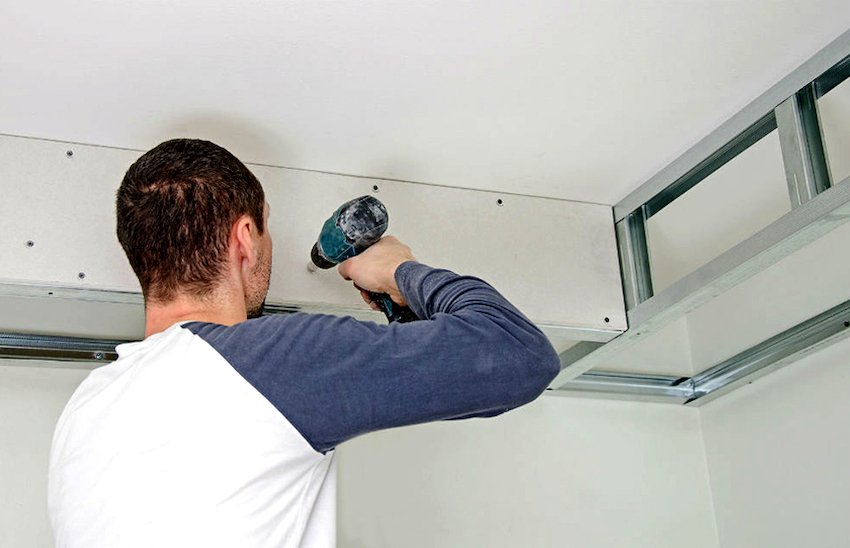
You can hide the pipes from the hood and the boiler in the kitchen in a box consisting of metal profiles and drywall
How to hide the pipe from the hood? Popular ways:
- install built-in furniture;
- build a plasterboard box;
- lay communications on top of the headset;
- install stretch and false ceilings.
To mask the pipes of the heating system, the technology of hidden laying in the floor is most often used. If the base is made of wood, communications are laid between the logs. When organizing concrete floors, the system is laid in the screed. Before hiding the heating pipes in the kitchen in the floor, it is imperative to check the operability of the communications, as well as to make sure that they are tight. It is advisable to use insulation so that the heating of the concrete screed is uniform throughout the room.
Places where the pipeline comes out from under the floor should be covered with special covers. These products are sold in stores, they have different shapes, structures, colors, etc.
There are many ways to mask communication systems. Each of them has both advantages and disadvantages. With a little effort and choosing the most suitable method, you can hide the most unsightly pipes in the house, or, conversely, make them part of the interior.
